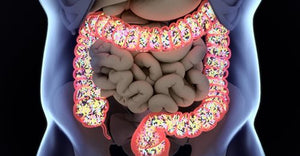Progesterone Power

Women have it so easy don’t they? Forget high heels and more expensive dry cleaning bills. Those are mild compared to menarche, menopause, and about forty years of menstruation in between. Under the best of circumstances, the hormonal fluctuations that accompany these events can make life “interesting” for the women experiencing them as well as for the men who are close to them. (Not to mention their kids and coworkers!) But throw in the curveballs of modern life—poor diet, inadequate sleep, relentless psychological stress, and an environment rife with inescapable estrogenic compounds in manmade goods—and the effects on a woman’s hormones make amusement park rollercoasters look like the kiddie teacup ride.
Considering all the things working against healthy hormone levels in women these days, a woman with naturally well-balanced hormones is probably the exception, not the rule. Many of the health challenges women face are the result of imbalances in estrogen and progesterone. While hormones can be “wonky” in any number of ways, the most common imbalances in women in the industrialized world are excess estrogen, inadequate progesterone, or both. The result is “estrogen dominance,” either outright (from excessive estrogen) or relative (normal amounts of estrogen coupled with insufficient progesterone to counterbalance the effects of estrogen). These may occur in women of reproductive age as well as in post-menopausal women, and they can have a significant negative impact on quality of life.
Among women of reproductive age, signs and symptoms of excess estrogen relative to progesterone include decreased sex drive, irregular or abnormal periods (including excessive bleeding), bloating, breast swelling and tenderness, mood swings (especially irritability and depression), weight gain, cold hands and feet, and premenstrual headaches. Fun, huh?
Adequate progesterone levels are critical for a healthy menstrual cycle. They may also play a role in healthy endometrial cell development and reducing risk for endometriosis (which, in some cases, results from high estrogen levels unopposed by adequate progesterone). Sufficient progesterone is also essential for a healthy full-term pregnancy (think “pro-gestation”), so pregnant women and those who are trying to conceive should work with their doctors to ensure proper levels. Keeping “pro-gestation” in mind, among women with a history of unexplained recurrent miscarriages, progesterone supplementation has been shown to slightly reduce the rate of subsequent miscarriages. Progesterone administration may also reduce the risk for preterm delivery and perinatal mortality among women with previous preterm deliveries.
As for post-menopausal women, the natural decrease in progesterone levels that occurs with aging may result in hot flashes, mood swings, urinary incontinence, hair loss, vaginal dryness, poor concentration, uterine fibroids, loss of libido, and an overall decline in health and quality of life. Additional symptoms include trouble sleeping, brain fog, and others that overlap with symptoms in younger women: breast tenderness, mood swings, water retention, and weight gain. (Sounds pretty grim, but there’s at least one positive aspect of being post-menopausal: no more money spent on feminine hygiene products!)
Fortunately, many of the unpleasant and in some cases debilitating symptoms of menopause may be improved through restoration of healthy progesterone levels. Data suggest that mean serum progesterone (and estradiol) concentrations are significantly lower among menopausal women reporting hot flashes compared to those not reporting hot flashes, and that higher levels of these hormones are associated with decreased odds of hot flashes. Progesterone supplementation has been shown to significantly decrease moderate to severe vasomotor symptoms compared to placebo in early postmenopausal women, and it doesn’t cause a rebound increase in occurrence when treatment is stopped.
As with estrogen, there are both synthetic and natural bioidentical progesterone formulations available. Synthetic preparations often induce unwanted side effects, such as fatigue, fluid retention, dysphoria, and increased androgenicity (increased expression of male hormones). Natural progesterone may present fewer side-effects while being equally if not more bioavailable than synthetic forms. Natural progesterone is obtained primarily from plants and can be administered via injection, through intravaginal or oral formulations, or applied topically and absorbed through the skin. As always, work with your healthcare practitioner to determine the best course of action.
Sources
- Apgar BS, Greenberg G. Using progestins in clinical practice. Am Fam Physician. 2000 Oct 15;62(8):1839-46, 1849-50.
- Goletiani NV, Keith DR, Gorsky SJ. Progesterone: review of safety for clinical studies. Exp Clin Psychopharmacol. 2007 Oct;15(5):427-44.
- Hussain M, El-Hakim S, Cahill DJ. Progesterone supplementation in women with otherwise unexplained recurrent miscarriages. Journal of Human Reproductive Sciences. 2012;5(3):248-251.
- Rode L et al. Systematic review of progesterone for the prevention of preterm birth in singleton pregnancies. Acta Obstet Gynecol Scand. 2009;88(11):1180-9.
- Prior JC, Hitchcock CL. Progesterone for hot flush and night sweat treatment--effectiveness for severe vasomotor symptoms and lack of withdrawal rebound. Gynecol Endocrinol. 2012 Oct;28 Suppl 2:7-11.
- David Brady







Comments 0